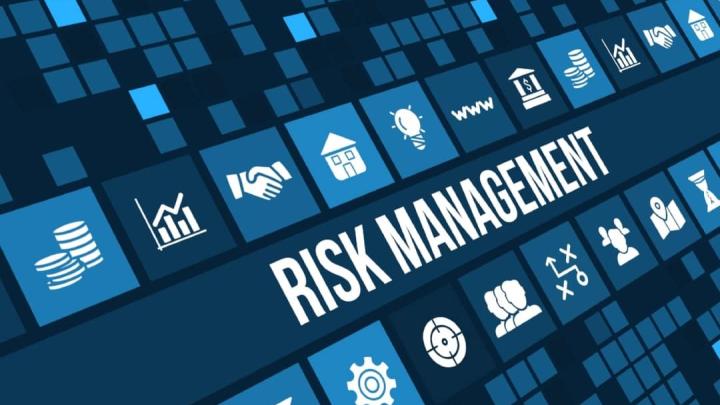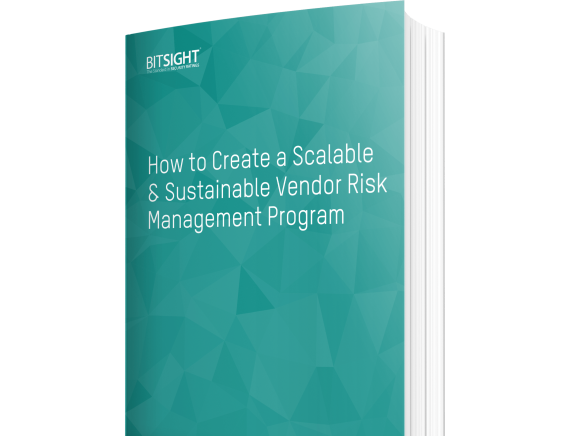Know what it takes to create a VRM program that’s ready and able to stand up to the current state of affairs and find a step-by-step guide for creating a sustainable and scalable vendor risk management program from the ground up.
Get Started With Vendor Security Risk Management Assessments
Tags:

Mitigating risk is an essential business function that should cover obvious domains — like financial risk — but also include reputational, strategic, and operational risks.
The most acute risk factor today is in the information security space. In fact, information security risk can quickly spillover into other areas, negatively affecting a firm’s reputation, financial performance, and strategic position. In order to protect the company and its clients, businesses must effectively manage all facets of information risk.
Your third party software and vendors can expose your organization to information risk that you’ve otherwise taken steps to mitigate, especially in how they handle your data. Developing an effective method of assessing vendor risk is imperative to protecting your company.
Understanding Vendor Security Risk for the IT Department
IT professionals, focused in many ways on security threats of the past, put a lot of emphasis on protecting their own network and data from internal and external breaches. They implement VPN networks and extensive firewall systems, while instituting employee policies to help ensure compliance with the highest level of data security. Today, however, many of the most serious threats come from outside the network, such as phishing and social engineering. Even when an IT department institutes the best security measures and upholds stringent protective policies, a few misguided clicks by an employee can cause serious repercussions. This is a challenge that all IT professionals face.
Third party vendors who do not maintain the same high level of security can introduce new risks to your data. This presents a unique challenge to IT professionals. Even if your IT departments has the most robust security posture, a vendor with access to your data could be the weak link in your security armor. What risks do vendors pose to your company? How do you go about mitigating it?
Assessing IT Vendor Risk
The first step toward successful IT vendor risk management is to know your vendors inside and out. Your IT vendor risk management team should make a list of all vendors and what types of data they have access to. Typically, such a list will be quite long. It’s important to prioritize vendors based on who has access to the most sensitive information, or who provides services critical to your business. From there, organizations can assess the security posture of each vendor using a variety of techniques and protocols.
Since thorough vetting and analysis is prohibitively time-consuming, most organizations with a large number of vendors are turning to security ratings to receive objective, verifiable, and actionable data about their vendors’ cybersecurity performance. These security ratings not only save time and resources for your organization, they are also continuous, quantified, and automated. They provide actionable intelligence that can be used both in dealing with current and prospective vendors. Bitsight provides vendor security ratings based on a proprietary algorithm that analyzes key factors such as compromised systems, diligence, user behavior, and data breaches. These trusted scores serve as a strong starting position for vendor risk management assessment.

Additional techniques that can be used to supplement security ratings include questionnaires, penetration tests, cybersecurity audits, and on site visits to vendor offices. While these can be valuable, they are also time and resource intensive.
Resolving Issues Found in Vendor Assessments
The best security ratings platforms also provide IT professionals with intelligence on vendor performance across specific categories. This makes it easy to identify exactly where a vendor is falling short on security performance. It can also make conversations with vendors easier. Instead of going back and forth with them and trying to figure out which areas need improvement, security ratings can pinpoint exactly where the problem lies. For example, you can mention to the vendor that their applications are vulnerable to attack or that their email security protocols are out of date. Being more specific with vendors during this communication can help make the process go smoothly. It also helps in outlining specific action items necessary to resolve security lapses.
Sometimes the simple act of making a vendor aware of their vulnerabilities will be enough to convince them to resolve the relevant issues. In other cases, the potential fixes may be costly or time-consuming, and the vendor may not act. It’s important to remember that such lapses in their security are a direct threat to your organization. It’s essential for IT professionals to use all available leverage to ensure vendors are in compliance with the expected level of security standards. Some security rating platforms allow customers to grant their vendors access to their rating and underlying details, free of charge.
Assessments Should Be Ongoing
The vendor risk management assessment is not a one-time project; it is an ongoing endeavor that requires constant vigilance. Risk management teams should set up automated alerts and regular check-ins to ensure that all of their IT vendors continue to practice good cybersecurity. The best security ratings platforms assist in this process by allowing businesses to set up notifications. Much like consumer credit monitoring services, these will send alerts if one of your vendors’ scores fall below a certain threshold. With hundreds of vendors and limited resources, it can be difficult to keep up with every change in your vendor’s security posture. These notifications can save time and alert you to potential risks before they snowball into more serious issues that can hurt your organization.
There’s No Time Like the Present
The most important thing you can do to improve your third party vendor risk management for IT is get started. Putting an organized, documented, and actionable program in place to assess and analyze the risk your third party vendors may be exposing you to can have a major impact almost right off the bat.


